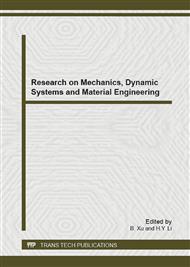p.247
p.251
p.255
p.259
p.263
p.269
p.273
p.277
p.280
Influence of Carbon Doping on Microstructure and Tribological Properties of CrN Coating
Abstract:
The influence of carbon doping on tribological properties of CrCN Coating was studied through preparation of coatings deposited on single crystal silicon and M2 high speed steel(HSS) substrate using closed-field unbalanced magnetron sputtering ion plating technique. The friction coefficients were measured by pin-on-disc set-up. The microstructure and bond states of the coatings were characterized by X-ray diffraxtion(XRD), transmission electron microscopy(TEM) and X-ray photoelectron spectroscopy(XPS). The results show that the friction coefficient of coating decreases from 0.75 to 0.38, the microhardness increases from 1930HV to 2302HV, and the specific wear ratio of the coatings decreases from 8.35110-5m3/Nm to 3.85910-5m3/Nm with the increasing of carbon target current(IC) from 0A to 1.5A. The analysis of microstructure shows that the coatings transform from crystalline state to amorphous state and the grain size of the coatings decreases with the increasing of carbon target current.
Info:
Periodical:
Pages:
263-268
Citation:
Online since:
December 2012
Authors:
Price:
Сopyright:
© 2013 Trans Tech Publications Ltd. All Rights Reserved
Share:
Citation:


